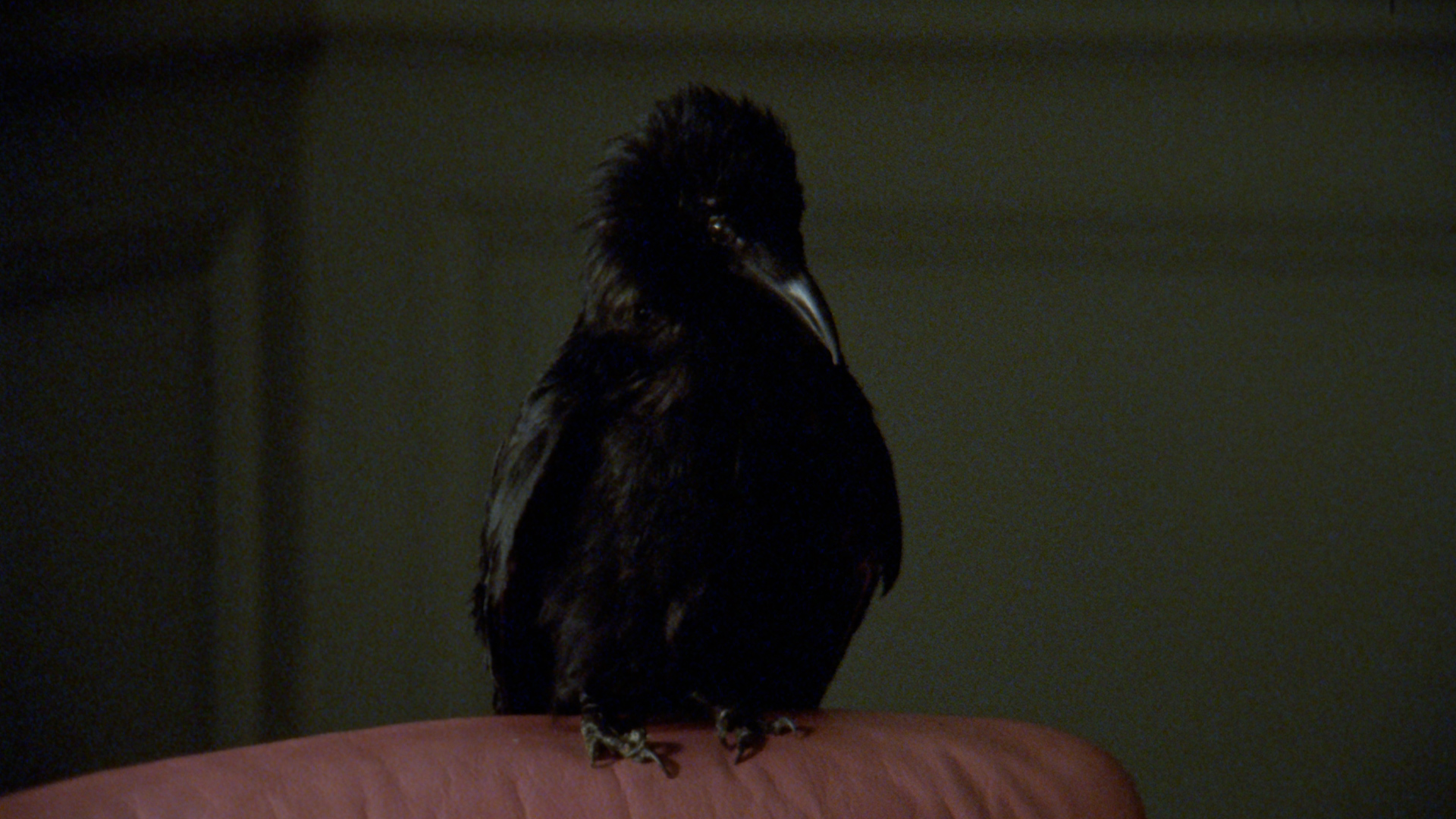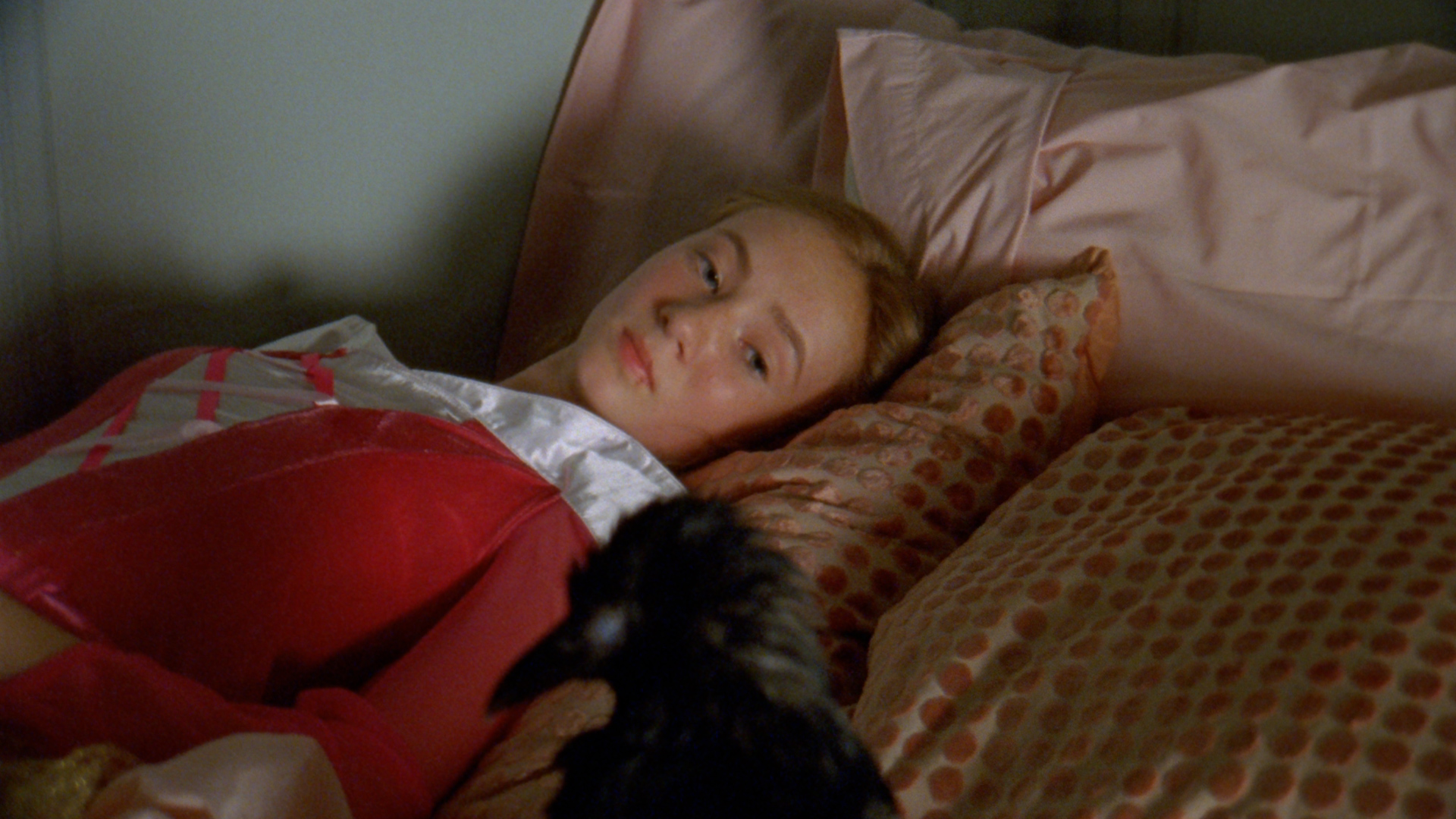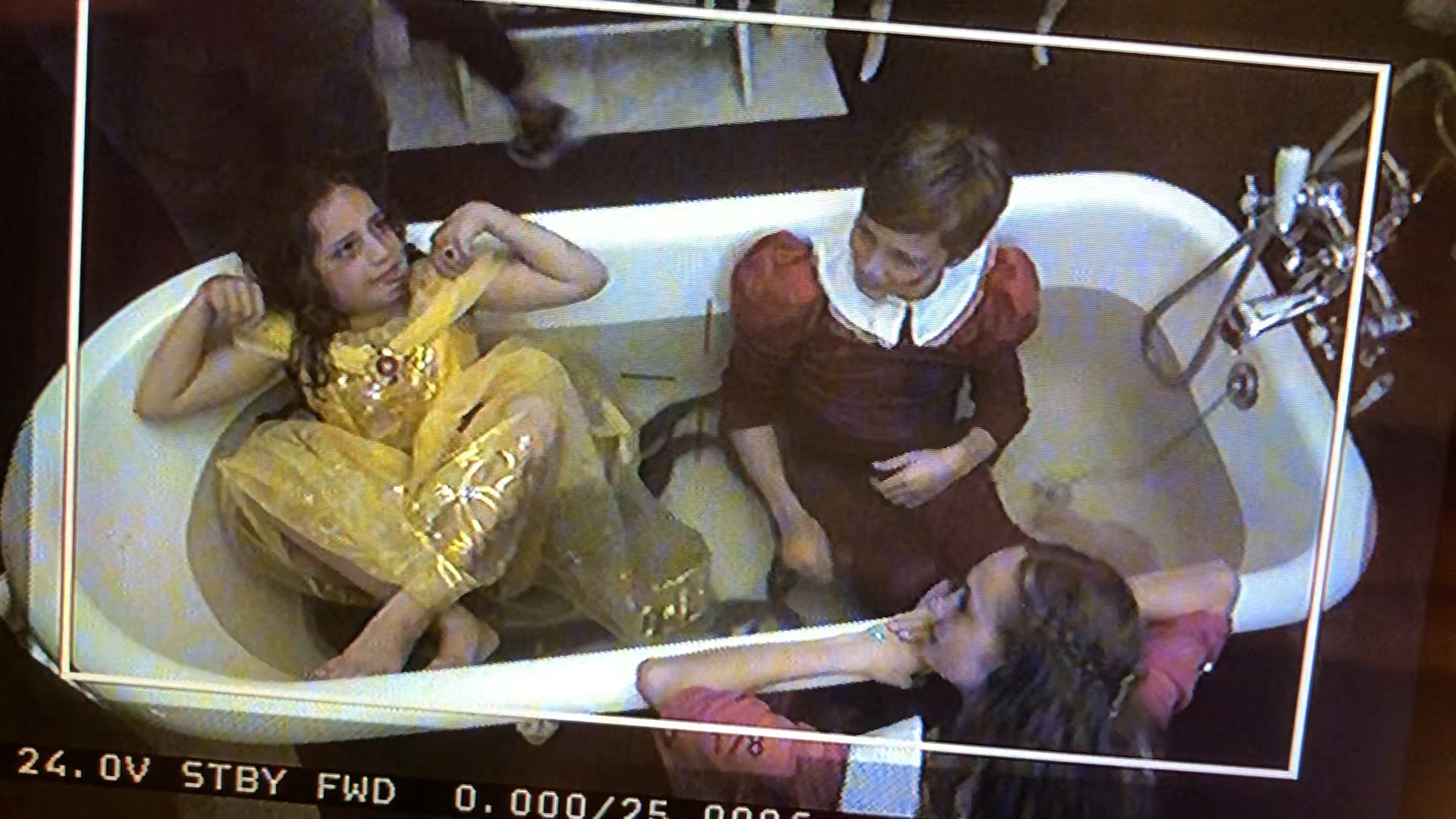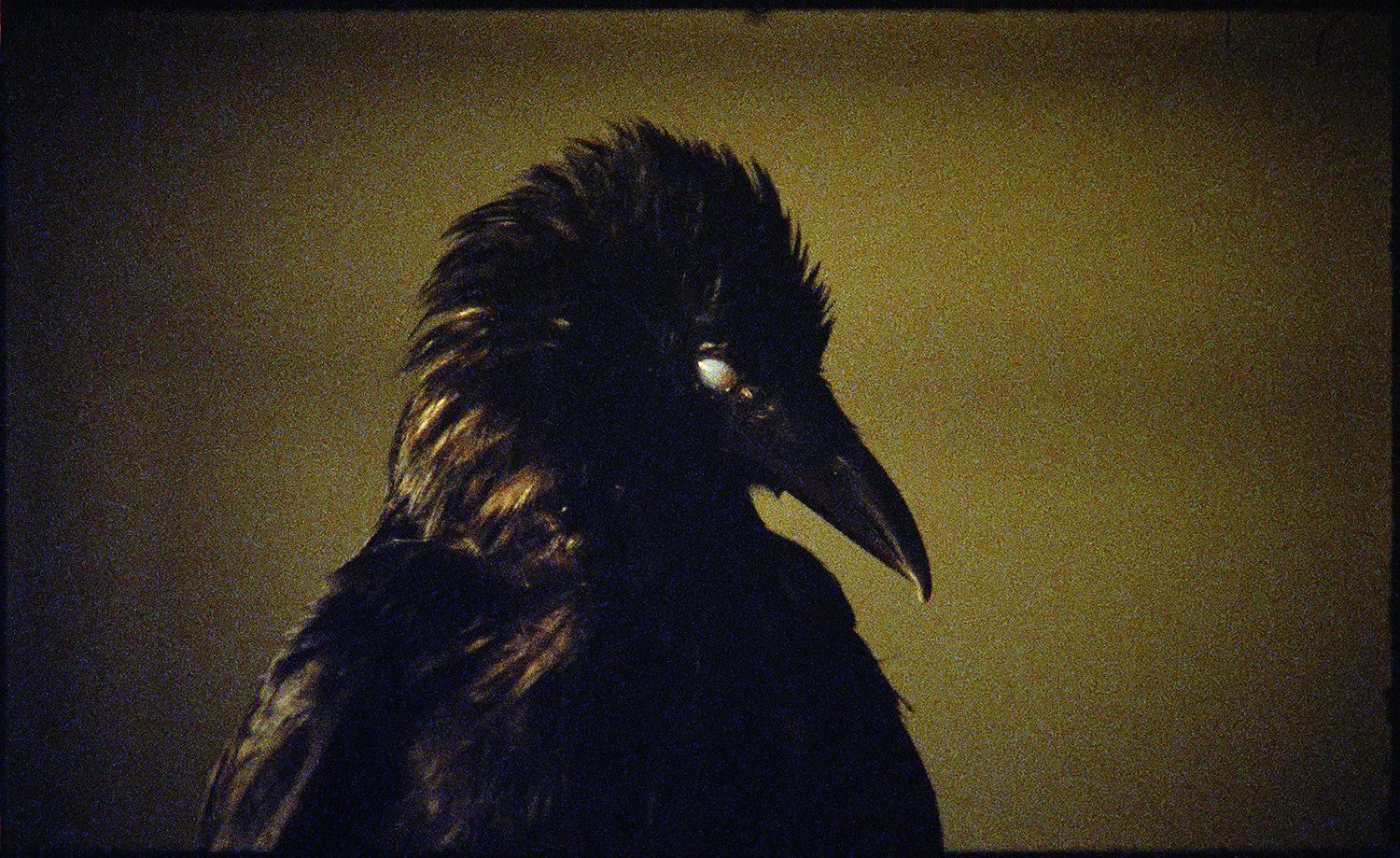Notes on 'The Bird Game'
Steven Bode
To accompany Marianna Simnett's The Bird Game and Confessions of a Crow, Steven Bode adds some supplementary notes.
Projects
In the Beginning (Part One)
In the Beginning there was Eve – although there is no record of Evelina de Rothschild ever using that particular soubriquet. Evelina (or Evy for short) was the second cousin of Baron Ferdinand de Rothschild, whom she married in the summer of 1865; a like-minds family acquaintance burgeoning into besotted romance. The two lovebirds were together all-too-fleetingly before tragedy intervened. Evelina died shortly after giving birth to the couple’s stillborn child – an event that, directly and indirectly, inspired two major edifices to be erected, in her memory and in her wake. The first of these was the Evelina Hospital for Sick Children, founded by Ferdinand in 1869 to care for the ill and infirm infants of an impoverished quarter of Dickensian London. The second of the pair was Waddesdon Manor, conjured from the wilderness in the years after Ferdinand’s loss, as a salve for his melancholy and an outlet for his obsessions. An ersatz chateau, and one of the first residences anywhere to be fitted with electric lights, Waddesdon served as a stage-set backdrop for Ferdinand’s growing collection of paintings and objects, and became a place to entertain the rich and the powerful of Victorian society. The miniature Eden of its surrounding parkland was also home to a menagerie of exotic animals. These are all long gone now. But the ornamental aviary remains, and continues to enhance its reputation as a refuge for endangered species, including one named the Rothschild’s Mynah. As its songbirds chirrup in their cages, their mellifluous flute-notes sound an ethereal echo of the breathy sighs and consumptive croaks of the tubercular Victorian children who might have once found equivalent sanctuary in Evelina’s hospital.
In the Beginning (Part Two)
In the Beginning there was Crow – the Cro-Magnon bird from mythology and pre-history. Crows (and ravens and rooks) feature prominently in creation stories from around the globe; never directly as makers of the world, more as overseers or disrupters of it. Ravens are the eyes and ears of Odin, the Norse god of war. In Greek myths, too, crows have far-sighted, oracular abilities; emissaries from an afterlife or an unseen netherworld. For the native people of the American North-West, crows and ravens uncover secrets, hoard their stealthily obtained knowledge, and are not always to be trusted; exemplars of the trickster archetype that is common to many different cultures. Doves may be seen cooing around blissful Eve in a prelapsarian Eden, but the shadow of a crow is always lurking somewhere, cawing at her shoulder, whispering of temptation, anticipating a Fall.

Sleeping Beauty
In the traditional ‘Sleeping Beauty’ story, ‘Beauty’ falls into an eternal sleep, as the result of the curse of an evil fairy, and her encounter with a mysterious old woman. In this, and in other fairy tales, youth and innocence are contrasted with malign, supernatural forces, often embodied in the figure of a witch or a crone. Wakeful, ageless and embittered, the witch haunts the hours of darkness when children should be getting their beauty sleep. Night birds, like owls, have often been regarded as symbols of bad omen, for all their association with vision and wisdom. Far better for a child to shut their eyes and drift into gentle, easeful slumber than be alert and exposed to what stirs in this strange twilight world.
The enigmas of sleep and the marvels of avian physiognomy continue to exert their fascination. Following the precedent of Norse mythology where birds were a source of intelligence in pursuit of war, the US military have been exhaustively researching migrating birds’ facility to go without sleep, with the aim of extending soldiers’ battlefield capabilities – an ambition that commentators such as Jonathan Crary, author of ‘24/7’, see as a precursor of a larger drive towards ever-greater workforce productivity within the arsenal of contemporary capitalism. Crary and other critics such as James Bridle have pointed to the insidious influence of new digital technology as a primary factor in this inexorable encroachment on the preserve of sleep, and the frontiers of personal privacy and interiority. As many people have observed, our handheld devices are making us twitchy. And as more and more people are starting to notice, these twofold feelings of restlessness and anxiety seem disproportionately prominent in children. A buzz of hyperactive agitation seems increasingly hardwired into the rhythms of contemporary life, and may be a harbinger of the future. Here, too, bird behaviour might provide an intriguing augury. In the lead-up to their departure for distant shores, and in anticipation of the sleepless journey ahead, migratory birds display a phenomenon called Zugunruhe, a kind of murmuration of the mind that ripples like a wave throughout the collective. Perhaps it is not too much of a stretch to interpret the jittery unrest of the present-day human psyche as a prelude to what might come to be seen as an equally significant time of transition, or moment of passage.

The Game Bird
Migrating songbirds are still hunted in their thousands across Southern Europe. Too small to be shot, the little creatures are caught in nets that they do not see until too late. In the country estates of England, there is a different tradition of hunting, in which pheasants and grouse are reared for sport. Fattened up over the summer months, and roaming as wild and carefree as children, these game birds are chased and spooked into flight at the start of the shooting season. Rising up into a clear blue sky, they are picked out and picked off one by one, as if in a shoot-‘em-up videogame, never knowing quite what hit them.
The Word Game
In Ovid’s ‘Metamorphoses’, a talking crow reveals that she was a beautiful woman in an earlier, happier life – further testimony as to how these creatures were often seen as shape-shifting entities; able to travel between worlds, and cross over from death to life and back again. It is no surprise that these eerie black birds might be conceived as having a dark past, or be considered as bearers of dark tidings. It is telling that their collective noun is a ‘murder’ of crows. Marianna Simnett’s The Bird Game appeared in the last weeks of 2019, just as the world was about to slide into a period of upheaval that even the most prescient Cassandra could not have foretold. So, what are we to make of this traditional symbol of foreboding announcing itself at this point? What message could this corvid begat by Ovid possibly be carrying in its beak? What word does it make you think of, children?
Ten Green Bottles
Children’s games often have a violent or virulent streak, in the same way that nursery rhymes frequently have a sinister, macabre undertone. ‘Ring a ring a roses’ is said to refer to the legacy of the plague, while the words of ‘Rock-a-Bye Baby’ tumble out in stark contrast to the lilting musical-box melody of its lullaby. In the games children play, special playmates are favoured and bonded, while others are banished or tagged. In Marianna Simnett’s The Bird Game, a talking crow befriends a group of six children, and seduces them into playing a mysterious game, with the promise that whoever wins it will never have to endure the boredom of sleep again.
The film was shot at Waddesdon Manor and begins as Crow and the children encounter each other in the Arcadian splendour of its grounds. As the children leave the garden (trooping past an ornate fountain of Pluto and Proserpina like ragamuffin von Trapp kids in Disney togs), they follow Crow into the house, and enter a dream-like play-space where dress-up pretend games cohabit with increasingly grown-up fantasies. Asked to act out the tale of ‘Sleeping Beauty’ in front of the painted panels depicting scenes from the story in the Bakst Room inside Waddesdon, they gamely perform to Crow’s demanding instructions, and go on to dance to her tune, only to fall by the wayside, one by one, as if in a mad bout of musical chairs.
As the game plays out, we find out more about its ringleader, Crow – about her past life, and about her current designs on one of the girls. Who is Crow? One of the children speculates: “crows are people that did bad things.” In the lead-up to the film’s denouement, Crow discloses that she too, like the character in Ovid, was once a beautiful young woman, until an instance of violation in her adolescence caused her horizons to darken, and her body to transform, As Crow dishes out retribution to each of the children and declares her love for the remaining girl, are we witnessing a cycle of abuse being repeated and passed on? Is she a perverse evil spirit, as crows have so often been portrayed? Or is she a more cryptic and protean figure, as crows are also described? An expression of something feral and atavistic in the human unconscious, much like the Freudian id? Or something more calculating and devious; a scheming, black-uniformed illustration of how power both enthrals and corrupts?
Franz Kafka (whose name approximates as ‘jackdaw’ in Czech) is better known for his labyrinthine, bureaucratic sagas than his uncanny animal fables – with the exception, perhaps, of his mordant, unsettling short story about a man turned overnight into a beetle, ‘The Metamorphosis’. Steeped in the stuff of equally hallucinatory transformation, and itself a kind of taskmaster trial of sorts, The Bird Game isn’t something you would immediately associate with the label of ‘Kafkaesque’. But just as Kafka regularly alluded to the enduring power of legends and parables (Prometheus, the Sirens, the Tower of Babel) as a lost, heroic counterpoint to the prosaic, utilitarian realities of the twentieth century, so Simnett’s magpie-like swoop over the rich domain of myths and fairy tales uncovers glints of illumination for contemporary contemplation.

In the End
Even before the onset of the coronavirus pandemic, there was growing discussion of the ‘excessive’ time children are spending in front of screens or on their phones, and how this increasingly remote, online interaction with others is exposing them to new dangers and pressures, some predatory, some internalised. These periodic outbreaks of worry and moral consternation often reveal as much about the fears of adults as they do about the desires and predilections of children, who have always been drawn to secret games and shared experiences outside of the gaze of their elders as a space to test boundaries and explore identities. The rite-of-passage of adolescence, and the nuances and complications of gender have traditionally been fraught, and have long been a topic of literature, folklore and psychology. But it may be true that things have intensified recently, as digital technology has extended its reach into more and more aspects of people’s waking lives, and the so-called ‘gamification’ of culture has continued apace, creating ever-greater expectation to perform and conform.
The writer Richard Seymour opens his book ‘The Twittering Machine’ with a reference to a 1922 painting by Paul Klee – a ghastly image, part fabulist, part Kafkaesque, in which birds are enticed to an automated death by the squawks of other birds. Although it was painted in the aftermath of the First World War, Seymour latches on to the scene as a resonant metaphor for people’s contemporary captivation and manipulation by the clickbait chorus of social media and the insidious drumbeat of surveillance capitalism, whose wiles and ruses snare the innocent and not-so-innocent in its invisible nets. It is not too much of a jump from Klee’s exquisite bird-trap to the silver-tongued machinations of Simnett’s Crow, who, in another of her ever-changing, shape-shifting guises, might also be seen, in this light, as a personification of the cold lockstep logic of the algorithm. As children’s games migrate from the bedroom and the playground to the digital, virtual world, and as people’s impulses, habits and circadian rhythms are increasingly overseen and modulated by technology, it may be true, as Seymour, Crary and numerous others are suggesting, that we are crossing a new kind of threshold, where the promise of a realm beyond sleep does not lead to a place of dreams but rather a state of hyperactive zombification, and where the demon of work has got its claws into everything, including the spontaneous spirit of sociality and play.
There are hints of this in The Bird Game, of course; as well as echoes of more primordial human hopes and fears. Arguably the film’s most distinctive feature, however, is its shifting, multiform character; a dream-like, fugue-like quality that invites interpretations but simultaneously occludes them, defers them, displaces them to another, different level. Crows are emblems of warning, for sure; but they are also maverick figures. Although reputed to always fly in a straight line, they often lead us on a zigzag course – into the unknown, into entanglement, into ambiguity and mystery. Marianna Simnett’s The Bird Game follows their example: it is both a portal into a human drama that has been played out across countless generations and a spectre of a future that may be out there, waiting to hatch.
–––
Steven Bode is Director of FVU.
The Bird Game (2019) by Marianna Simnett is produced by Film and Video Umbrella (Producer Sophie Neave). Co-commissioned by the Rothschild Foundation, Frans Hals Museum, and Film and Video Umbrella. FVU is supported using public funding by the National Lottery through Arts Council England.

__2021._Courtesy__the_artist__Film_and_Video_Umbrella_and_the_Rothschild_Foundation(5).jpg)